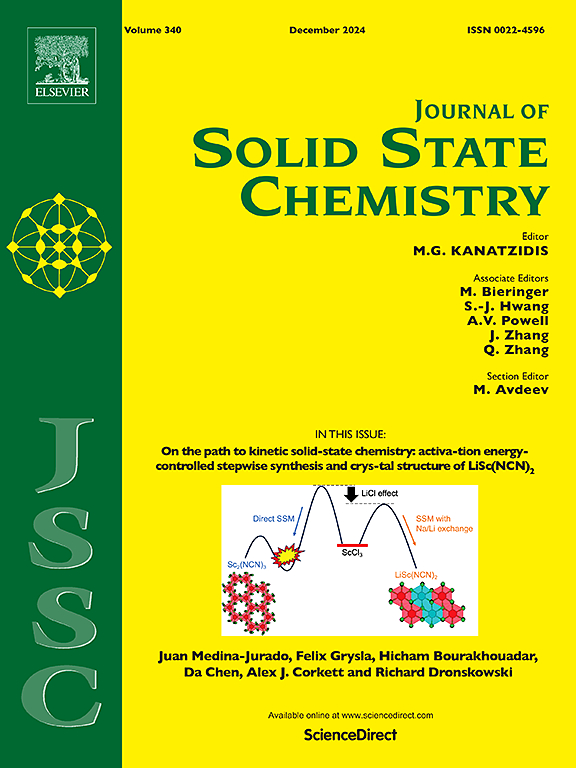Sb-doped kagome antiferromagnet FeGe: Superlattice structure and spin-reorientation transition
IF 3.2
3区 化学
Q2 CHEMISTRY, INORGANIC & NUCLEAR
引用次数: 0
Abstract
Kagome lattice, a two-dimensional corner-sharing triangle network, can be realized in a real material and thus host many interesting physical phenomena. Charge density wave, anomalous Hall effect and antiferromagnetism have been discovered in a typical kagome material FeGe. Here, we report the effects of Sb doping on its crystal structure, magnetic and electrical transport properties. Charge density wave is suppressed completely by only a doping level of x = 0.05 in FeGe1-xSbx. A superlattice is realized at room temperature when the doping level of Sb reaches x = 0.12. The structure distortion of the supercell for the Fe kagome and Ge honeycomb planes are unveiled from single crystal x-ray diffraction measurements. Sb doping can only suppress the A-type antiferromagnetism mildly in FeGe, and induce a spin-reorientation transition when the doping level x is 0.1 or larger. The spin-reorientation transition can be modulated by the doping level as well as the external magnetic field in FeGe1-xSbx. No detectable transport or thermodynamic signals can be identified for the spin-reorientation transition, indicating a subtle change in the electronic structure or magnetic entropy.

求助全文
约1分钟内获得全文
求助全文
来源期刊

Journal of Solid State Chemistry
化学-无机化学与核化学
CiteScore
6.00
自引率
9.10%
发文量
848
审稿时长
25 days
期刊介绍:
Covering major developments in the field of solid state chemistry and related areas such as ceramics and amorphous materials, the Journal of Solid State Chemistry features studies of chemical, structural, thermodynamic, electronic, magnetic, and optical properties and processes in solids.
 求助内容:
求助内容: 应助结果提醒方式:
应助结果提醒方式:


